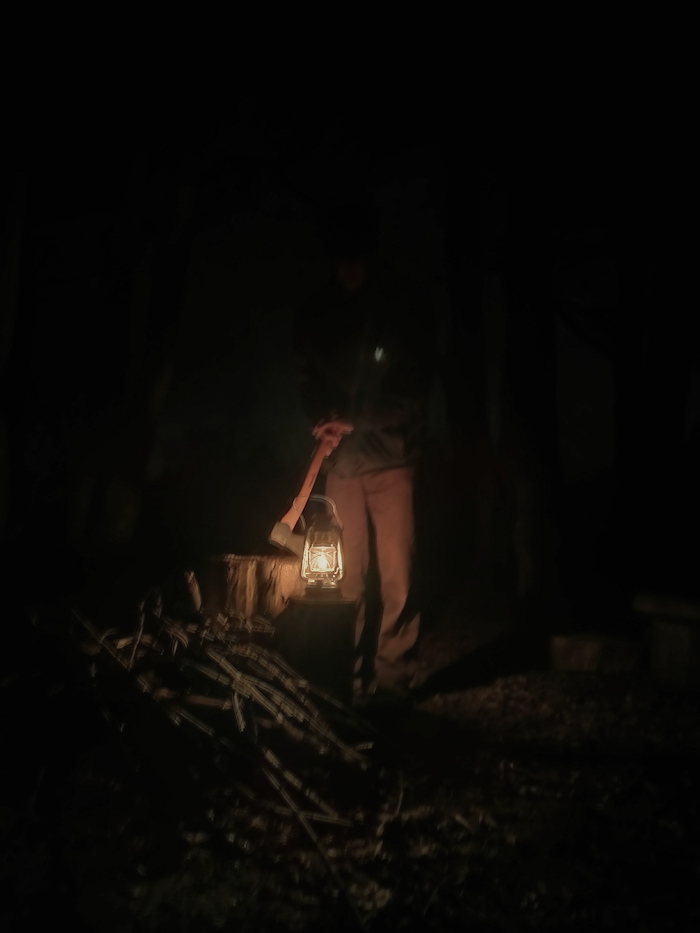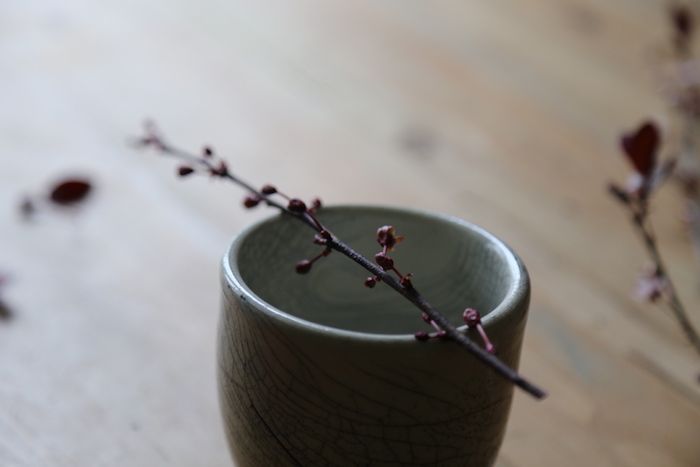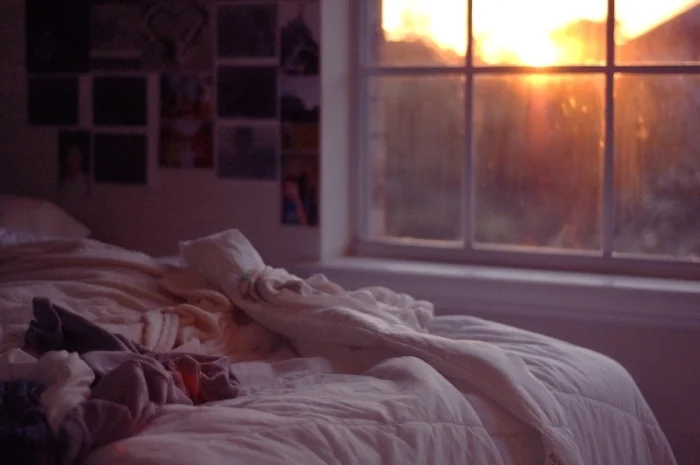
Photo: Kirsty Lee
In our early spring issue, four writers each tell us a story of a bed. Here, Kirsty Lee, who works in conservation, managing habitats for wildlife, tells us about her bed in the wild, where she lays her head down each night.
My bed takes my last sigh in the evening, one that mounts the memory foam in my mattress, which keeps my hips off a damp floor that, I am told, will soak into my bones if I lay on it. This bed I sleep on is only temporary, at a place where I stay in woodland where I work. I purchased it, with its mod cons. Memory foam air pockets, in hope it would give me better rest, a more comfortable sleep; the comfort a deterrent from the long night of listening ahead of me.
This job is a simple trade. We work with sustainably felled wood that contributes to the management of woodland in Kent. We cut it, peel it and cleave it, into somewhat small, neat individual stakes that will be bundled and wired together, shipped across the country, into Europe. There it is plunged back into the ground as a fence – isolating a pocket of land, a herd of sheep or a small shelter. It is hard work but it feels like good work, particularly, as the days grow longer and the sprite snowdrops emerge. Nightjars arrive and purr between the single tree standards and fritillaries float between glades in the hot thin air. I have learnt that this is a job of craft, of nurture and of tire. So much so, that it leaves my arms an inch longer each day and my body too tired to run away from itself. You might think after such a day, that sleep would come easy, but as night falls the woodland is invigorated and the world changes, the noise of our clatter taken by the sound of the dark. This darkness is one I don’t recognise, or at least didn’t at first, no longer muted by streetlights, or the sound of cars. It is dark with an urge, a deepness full of sounds that I am starved of in my brick house.
This theatre of the night starts at around 7.30pm, by which time we have stoked up the fire and lay on our beds, listening to the wood smouldering as it keeps us warm. It is then that I realise what I hear is my own. The boundaries between reality and dream dissolve and I slip into the steady current of the wind. It conjures up a speed I feel I should keep up with, a rhythm assembled at the fringes of my imagination. It draws me into a fight or flight scenario, not simply because of the pendulous branches of the diseased ash hanging overhead, but the wind that jabs me with gusto. This same wind sparks the barking, wild dogs I imagine, terrifically fierce and hungry for blood. The moles beneath scratch at the ceiling of their world, drawing me into the dank soils webbed in mycelium, their noiselessness an itching discomfort. It is not long before the owls catch wind of it all, their lavish screech echoes in the hollow air. I try to quiet my thoughts, shove my head in my sleeping bag, into the creeping thatched grasses that hide amphibious creatures, slimy and subdued under the glow of the moon.
My supernatural hearing is at once stopped, when my pragmatic mind tells me it is muntjac, toads and newts, and not wild dogs, footsteps, or cursed creatures that lurk beneath. But these experiments with imagination are merely self-absorbed musings and I realise that dark is just a colour. When I lay here alone in my bed, surrounded by the world, laid upon the earth, I feel I can finally guide my own darkness.
Kirsty Lee has been working in conservation, managing habitats for wildlife alongside working in rural communities for the past five years. She's particularly interested in how we engage with nature, how it can improve our wellbeing whilst reducing isolation and loneliness. She writes about her experiences at www.hellokirsty.tumblr.com
Read four more stories of a bed in our early spring issue, out now.







